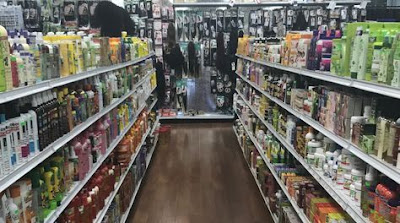If last week's article convinced you to give the natural hair journey a try then I have done my job. In this article, I will discuss the many challenges you will face giving up relaxers during the first year. My goal is to prepare you through my experiences and the experiences from the people closest to me when we decided to go natural.
So you removed the creamy crack from your life for two weeks and everything seem to be going great until the third week when suddenly your new hair growth is unable to blend in with the straight hair. You start to panic because the styles you usually style your hair as is no longer working for you. You can no longer slick your hair back so easily and you're on the verge of either going back to the creamy crack or cutting it all off and calling it a day. If you end up at this point, don't worry because you're not alone. I believe the majority of people has had these reactions. The best way to survive this stage is through wearing protective hairstyles. Protective hairstyles are styles where you don't create a lot of manipulation to your hair. Also, it is where you don't have to style your hair daily. Examples of protective hairstyles are: braids, twists, wigs, sew-ins, roller sets, twist outs, and braid outs. By wearing these type of hairstyles for the first one to two years will help make life a little bit easier for you as you're getting to know your hair textures and what your hair needs to keep it moisturized; help hairstyles last longer; and your hair remaining in a healthy state. Lastly, by wearing protective styles, you do not have to cut the relaxed straight hair off immediately. The time you decide to cut the relaxed hair off will always be a personal choice.
 |
| Image found on Google |
Now that you have become natural, going to the hair and care aisles may either excite you or scare you because now you have now entered the world of endless hair products that are address to people with natural curly/kinky hair. First you're going to buy products that you heard about from others have used such as your family, friends, associates, and social media influencers. Many of these products will be a hit or miss during the first few years of the natural hair journey. And yes you're going to become that person with endless hair products in your house with many of the containers being half empty. It took me five years to learn the type of hair products my hair needs to remain moisturize for more than two days starting in 2019. Currently, my mother and my youngest sister are still going through this phrase. Neither one of them has hit the fourth year natural yet; while the middle sister has decided that she wants to give the natural hair journey a try this year so she will possibly go through this phrase as well.
 |
| Image found on Google |
While you are trying all these hair products that you see your favorite hair influencers use, you are going to spend a lot of time trying to figure out what your hair type is and or how you can make your hair do the same things as them. I'm going to stop you here. Your hair texture is usually more than one type and even if you try, you will not always be able to really change your hair texture to become like your favorite youtuber. With the right products, you will be able to get the most out of your hair. And no one really has the same hair texture. Everyone's hair texture is very unique to one another. Also, everyone always wants the same type of hair texture of another person. That even takes place with people you believe already has the best hair texture.
 |
| Image found on Google |
And lastly, if you decide to wait before you do the "big chop," meaning to cut all the straight hair at once, hair wash day is going to be a nightmare. While your trying to learn the right products for your hair, you also have to adopt new hair washing routines. This will make hair washing take longer than it usually took when you had a relaxer. You will now have to learn how to detangle your hair with conditioner or co-wash with water; sitting under a dryer or a hair/facial steamer; then wash your hair. This alone can take a few hours or more depending on how long you let the conditioner or co-wash sit in your hair. After you wash your hair, you should not let your hair become completely dry unless you're planning to have it braided or twisted into a protective hairstyle. Keeping some of the water in your hair will make your hair manageable when you're going through sections of hair and adding products to your hair and scalp. Also, when it comes to detangling both the naturally curly/kinky hair and straight hair, it will always be a challenge until you cut the relaxed hair off completely.
With this insight, I hope your first year will not become as difficult now that you know what's in for you as your natural hair journey beginnings.

